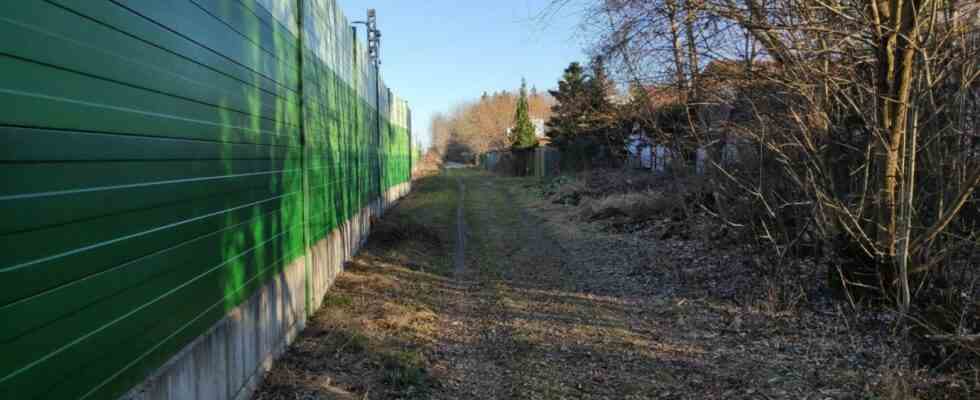If everything goes according to plan, by 2024, cyclists will be zipping through hair in five minutes. That’s how fast it could be if you could drive from east to west in one go without traffic lights. The plans for the “Fast Cycle Path” proposed and promoted by the Greens from the Ebersberg district to Munich’s Ostbahnhof provide exactly that. After Vaterstetten and Grasbrunn, the Haar municipal council has now also unanimously approved the project on its corridor. The cycle path is to be led along the railway line, mainly along the noise protection wall. Coming from Grasbrunn, it goes south of the railway via the station to Höglweg and there through the underpass. The path, which is at least 2.50 meters wide, then continues north of the railway embankment to Trudering. Deutsche Bahn has signaled approval for the project, it is said. The Free State is expected to assume up to 80 percent of the costs for the expansion.
What the planners from the Wipfler office presented to the municipal council’s building committee gives those responsible a lot of confidence that the cycle path can be realized quickly. Ulrich Leiner (Greens) expressed his delight at the development, which the city of Munich will certainly look at with great envy because little is happening there. Gregor Schober and Nina Rennett from the planning office explained section by section how the paved cycle path, which is also illuminated with LED lights, should run on partly existing and partly to be expanded trampled and gravel paths.
From the municipal boundary of Grasbrunn, it is to go to Untere Parkstrasse up to a 35-metre-long, four-metre-wide cycle bridge that spans Vockestrasse. Up to the second, 30-meter-long bridge over Leibstrasse at the level of the roundabout, the cycle path is planned along the noise protection wall. Pedestrians are separated there on the existing park road. After Leibstrasse, the short-term car park and the station building are passed to the park-and-ride area and the underpass on Höglweg, where cyclists pass under the railway. “This concept makes sense for the entire region,” said Schober.
The planner expects an agreement with Deutsche Bahn, which owns a large part of the required land, by September. The implementation planning is to be drawn up by February 2023, then put out to tender in a “relatively optimistic timetable” and construction is to begin in summer 2023, so that cyclists can be on the asphalt strip by 2024. The bridges could possibly only be completed six months or a year later. But that would be tolerable, said Schober. The municipality of Haar will submit an application for funding to the “Radoffensive Bayern” program by mid-July.
Without subsidies, the whole thing should cost a good three million euros for the section on Haarer Flur alone, with 1.8 million euros being earmarked for the two bridge structures alone. The course of the route is largely based on the proposal that was drawn up for the Haarer mobility concept, which the municipal council also approved.

